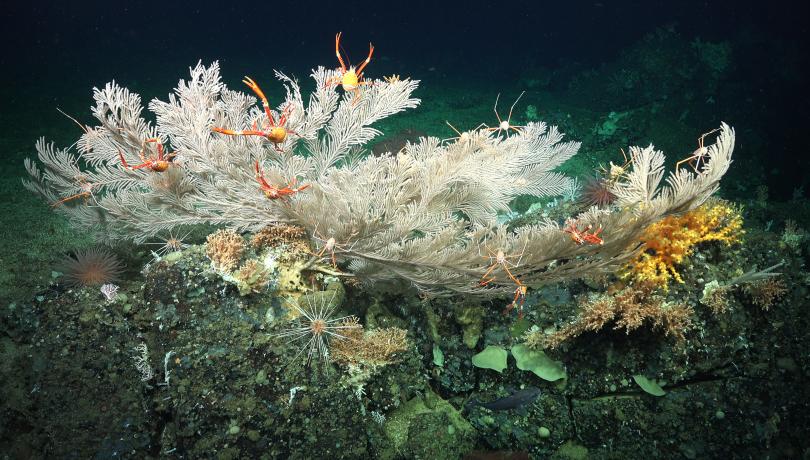The discovery was made a few weeks ago in the framework of an international oceanographic campaign in which the ICM-CSIC has played a key role.

Scientists from the Institut de Ciències del Mar (ICM-CSIC) aboard the research vessel Falkor , which belongs to the Schmidt Ocean Institute and is equipped with the 4,500-meter rated ROV SuBastian, have contributed to make groundbreaking discoveries in the waters surrounding the Galapagos Islands (Equator). Among them are two large untouched, thriving and diverse cold-water coral reefs located at depths between 370 and 420 meters, which have been mapped with cutting-edge marine robotics and which enhance our knowledge of deep reef ecosystems within the Galápagos Islands Marine Reserve.
During the international expedition, the scientific team, including researchers from the ICM-CSIC, utilized advanced laser scanning technology to generate incredibly detailed maps of these reefs, providing unprecedented two-millimeter resolution imagery capable of identifying seafloor organisms at the finest scale. This mapping technique, superior in resolution compared to traditional methods, allowed for the documentation and spatial organization of living organisms in their natural habitat, with a specific focus on vertical reefs, which are challenging environments to image and study, despite the high biodiversity they support.
In addition to unveiling the pristine coral reefs, researchers also uncovered two previously uncharted seamounts, confirming their existence based on prior satellite data. These findings are a result of a 30-day expedition led by Dr. Katleen Robert of the Fisheries and Marine Institute of Memorial University of Newfoundland and Labrador, involving 24 scientists representing 13 organizations and universities across the world.
“The interdisciplinary efforts of the scientific team have contributed to obtain very valuable data using an holistic multi-scale approach that is key to understand the dynamics of deep-sea ecosystems within Galápagos National Marine Reserve and outscale our findings to other areas”, highlights the ICM-CSIC researcher Claudio Lo Iacono, co-leader of the scientific expedition.
Concretely, the ICM-CSIC team contributed to advance the study of fine-scale hydrodynamic data on cold-water coral reefs using for the first time an Acoustic Doppler Current Profiler (ADCP) mounted on a ROV.
According to Lo Iacono, “the accuracy of the navigation system and the stability of ROV SuBastian allowed to image and quantify the bottom hydrodynamics on the studied reefs with unprecedented detail. This will help in better understanding the interactive processes between the seafloor complexity, mapped at sub-metrical scale, and the local current patterns, ultimately providing organic-rich sediments to corals and creating the most suitable conditions for their existence”.
"Thanks to the disparity of the expertise of the cruise participants, which ranged from ecologists to geologists and oceanographers, we have been able to obtain an overarching perspective of the enclave. We also had the opportunity to share our experience with school groups, in order to raise awareness among children about the importance of protecting the deep marine environment," says the ICM-CSIC doctoral student Ariadna Martinez, who also participated in the campaign.
The scientific exploration extended to the Isla del Coco National Marine Park, a protected area managed by Costa Rica, led by National Geographic Explorer Ana Belen Yanez. During the expedition, researchers observed multiple deep-sea coral species laden with eggs, contributing essential data to the management of the Eastern Tropical Pacific Marine Corridor.
The expedition's outcomes, stand as a testament to the vital role of collaborative research in uncovering and preserving the rich biodiversity of marine ecosystems, supporting and ensuring their sustainable management and protection for future generations.